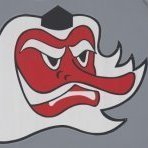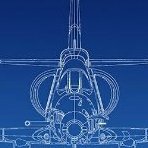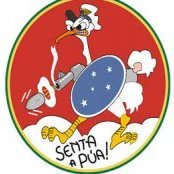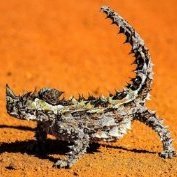
hal9001
-
Posts
13 -
Joined
-
Last visited
Reputation Activity
-
 hal9001 got a reaction from CRAZY IVAN5 in AerMacchi C.202
hal9001 got a reaction from CRAZY IVAN5 in AerMacchi C.202
Price is a market variable, not strictly a kit quality; what applies to USA does not generally represent the "whole globe".
In Europe you can easily buy the kit for 85€(95$) and, with a little patience and some search, even for 75€ (83$)...that's what I paid and for such a level of price I can't complain. To give some perpective, in Europe we pay 65€(71$) for an Hasegawa P-47 (and they are almost impossible to find). Hasegawa kits are miles better as surface detail BUT they give nothing more (only a pilot), no engine, no deep interior details, even no seatbelts! You have to buy them at extra cost and still you have a serious problem with the engine and cowling alignement that requires some surgery... reshaping a prop spinner or correct the rib stitchings should not be a too daunting task for any medium-level modeller....and anyway how many aftermarket spinners were sold to correct Hasegawa BF-109s?
Modelling market is a business and as such every player tries to get a slice of the pie, you're the only judge of your money, but nothing is "mandatory" and some things are almost "futile" (not to say useless like the Eduard set for the 1/32 Macchi). Recent Tamiya 1/32 kits are almost "perfect", nontheless there are tons of aftermarket sets worth many times the already high price of the kits...do you really need them?
I'm not a fan of Italeri, they're one of the worst money scrounger on the modelling market, but their 1/32 kits are the only reason I keep an eye on their catalogue.
Merry Xmas from me, my lasagna and my bottle of Chianti...
P.S.The name Aermacchi only applies to the post WWII production
-
 hal9001 got a reaction from dutik in AerMacchi C.202
hal9001 got a reaction from dutik in AerMacchi C.202
Price is a market variable, not strictly a kit quality; what applies to USA does not generally represent the "whole globe".
In Europe you can easily buy the kit for 85€(95$) and, with a little patience and some search, even for 75€ (83$)...that's what I paid and for such a level of price I can't complain. To give some perpective, in Europe we pay 65€(71$) for an Hasegawa P-47 (and they are almost impossible to find). Hasegawa kits are miles better as surface detail BUT they give nothing more (only a pilot), no engine, no deep interior details, even no seatbelts! You have to buy them at extra cost and still you have a serious problem with the engine and cowling alignement that requires some surgery... reshaping a prop spinner or correct the rib stitchings should not be a too daunting task for any medium-level modeller....and anyway how many aftermarket spinners were sold to correct Hasegawa BF-109s?
Modelling market is a business and as such every player tries to get a slice of the pie, you're the only judge of your money, but nothing is "mandatory" and some things are almost "futile" (not to say useless like the Eduard set for the 1/32 Macchi). Recent Tamiya 1/32 kits are almost "perfect", nontheless there are tons of aftermarket sets worth many times the already high price of the kits...do you really need them?
I'm not a fan of Italeri, they're one of the worst money scrounger on the modelling market, but their 1/32 kits are the only reason I keep an eye on their catalogue.
Merry Xmas from me, my lasagna and my bottle of Chianti...
P.S.The name Aermacchi only applies to the post WWII production
-
 hal9001 got a reaction from Kagemusha in AerMacchi C.202
hal9001 got a reaction from Kagemusha in AerMacchi C.202
Price is a market variable, not strictly a kit quality; what applies to USA does not generally represent the "whole globe".
In Europe you can easily buy the kit for 85€(95$) and, with a little patience and some search, even for 75€ (83$)...that's what I paid and for such a level of price I can't complain. To give some perpective, in Europe we pay 65€(71$) for an Hasegawa P-47 (and they are almost impossible to find). Hasegawa kits are miles better as surface detail BUT they give nothing more (only a pilot), no engine, no deep interior details, even no seatbelts! You have to buy them at extra cost and still you have a serious problem with the engine and cowling alignement that requires some surgery... reshaping a prop spinner or correct the rib stitchings should not be a too daunting task for any medium-level modeller....and anyway how many aftermarket spinners were sold to correct Hasegawa BF-109s?
Modelling market is a business and as such every player tries to get a slice of the pie, you're the only judge of your money, but nothing is "mandatory" and some things are almost "futile" (not to say useless like the Eduard set for the 1/32 Macchi). Recent Tamiya 1/32 kits are almost "perfect", nontheless there are tons of aftermarket sets worth many times the already high price of the kits...do you really need them?
I'm not a fan of Italeri, they're one of the worst money scrounger on the modelling market, but their 1/32 kits are the only reason I keep an eye on their catalogue.
Merry Xmas from me, my lasagna and my bottle of Chianti...
P.S.The name Aermacchi only applies to the post WWII production
-
 hal9001 got a reaction from quang in AerMacchi C.202
hal9001 got a reaction from quang in AerMacchi C.202
Price is a market variable, not strictly a kit quality; what applies to USA does not generally represent the "whole globe".
In Europe you can easily buy the kit for 85€(95$) and, with a little patience and some search, even for 75€ (83$)...that's what I paid and for such a level of price I can't complain. To give some perpective, in Europe we pay 65€(71$) for an Hasegawa P-47 (and they are almost impossible to find). Hasegawa kits are miles better as surface detail BUT they give nothing more (only a pilot), no engine, no deep interior details, even no seatbelts! You have to buy them at extra cost and still you have a serious problem with the engine and cowling alignement that requires some surgery... reshaping a prop spinner or correct the rib stitchings should not be a too daunting task for any medium-level modeller....and anyway how many aftermarket spinners were sold to correct Hasegawa BF-109s?
Modelling market is a business and as such every player tries to get a slice of the pie, you're the only judge of your money, but nothing is "mandatory" and some things are almost "futile" (not to say useless like the Eduard set for the 1/32 Macchi). Recent Tamiya 1/32 kits are almost "perfect", nontheless there are tons of aftermarket sets worth many times the already high price of the kits...do you really need them?
I'm not a fan of Italeri, they're one of the worst money scrounger on the modelling market, but their 1/32 kits are the only reason I keep an eye on their catalogue.
Merry Xmas from me, my lasagna and my bottle of Chianti...
P.S.The name Aermacchi only applies to the post WWII production
-
 hal9001 got a reaction from thierry laurent in AerMacchi C.202
hal9001 got a reaction from thierry laurent in AerMacchi C.202
Price is a market variable, not strictly a kit quality; what applies to USA does not generally represent the "whole globe".
In Europe you can easily buy the kit for 85€(95$) and, with a little patience and some search, even for 75€ (83$)...that's what I paid and for such a level of price I can't complain. To give some perpective, in Europe we pay 65€(71$) for an Hasegawa P-47 (and they are almost impossible to find). Hasegawa kits are miles better as surface detail BUT they give nothing more (only a pilot), no engine, no deep interior details, even no seatbelts! You have to buy them at extra cost and still you have a serious problem with the engine and cowling alignement that requires some surgery... reshaping a prop spinner or correct the rib stitchings should not be a too daunting task for any medium-level modeller....and anyway how many aftermarket spinners were sold to correct Hasegawa BF-109s?
Modelling market is a business and as such every player tries to get a slice of the pie, you're the only judge of your money, but nothing is "mandatory" and some things are almost "futile" (not to say useless like the Eduard set for the 1/32 Macchi). Recent Tamiya 1/32 kits are almost "perfect", nontheless there are tons of aftermarket sets worth many times the already high price of the kits...do you really need them?
I'm not a fan of Italeri, they're one of the worst money scrounger on the modelling market, but their 1/32 kits are the only reason I keep an eye on their catalogue.
Merry Xmas from me, my lasagna and my bottle of Chianti...
P.S.The name Aermacchi only applies to the post WWII production
-
 hal9001 got a reaction from Greg W in Italeri Macchi C.202 Folgore. FINISHED… well almost!
hal9001 got a reaction from Greg W in Italeri Macchi C.202 Folgore. FINISHED… well almost!
The gap is intentional and needed to compensate engine vibrations (or better to avoid propagating cowling vibrations), same as Ju-87 and even BF-109, it also helps to easily remove the panels for maintenance. Engine covers are phisically and visually disconnected from the rest of fuselage skin, the gap goes around the oil radiator too
-
 hal9001 reacted to Cheetah11 in 1/24 Ju-87 d/g
hal9001 reacted to Cheetah11 in 1/24 Ju-87 d/g
I presume it is for the Trumpeter kit. Just remember to cut about 1 inch out of the rear fuselage.
-
 hal9001 got a reaction from TAG in Italeri Macchi C.202 Folgore. FINISHED… well almost!
hal9001 got a reaction from TAG in Italeri Macchi C.202 Folgore. FINISHED… well almost!
Gun ports/blast panels, I suppose were made of steel and riveted with round head rivets (too hard embossing steel for flush rivets). Italeri reproduction is oversized and "blurry", you can try to improve them("resculp" them with a beading tool or even a cutted syringe needle) or simply eliminate them, they are not so visible in reality. The gun ports were painted with a black heat resistant primer
-
 hal9001 got a reaction from TAG in Italeri Macchi C.202 Folgore. FINISHED… well almost!
hal9001 got a reaction from TAG in Italeri Macchi C.202 Folgore. FINISHED… well almost!
The gap is intentional and needed to compensate engine vibrations (or better to avoid propagating cowling vibrations), same as Ju-87 and even BF-109, it also helps to easily remove the panels for maintenance. Engine covers are phisically and visually disconnected from the rest of fuselage skin, the gap goes around the oil radiator too
-
 hal9001 reacted to thierry laurent in Mc202-205 resin upgrades?
hal9001 reacted to thierry laurent in Mc202-205 resin upgrades?
Comparing prices of plastic kits is somewhat like comparing oranges and apples. In some areas you just find local apples and import oranges whereas in others this is the opposite and still in others you need to import both with quite different prices. This is also valid for kits. In the US, Canada, Australia or NZ, there is no more production of LSP. All of them need to be imported but Asian models are noticeably cheaper than in Europe in spite of the fact they are also imported there! However, half of the LSPs are now produced in Europe. So, hopefully for us, such kits are noticeably cheaper. To put things in perspective the Mc 202 is costing us around half the price of the Ki-45! In the US, imported Asian models can even be cheaper than some of their European counterparts. This means comparing the value for money of a ZM, Hasegawa or Tamiya Spitfire, Mustang or Me109 with a Revell Germany one often results in quite different assessments! So, notwithstanding individual evaluation, value for money is very relative according to where you live!
-
 hal9001 got a reaction from Uncarina in Italeri Macchi C.202 Folgore. FINISHED… well almost!
hal9001 got a reaction from Uncarina in Italeri Macchi C.202 Folgore. FINISHED… well almost!
Gun ports/blast panels, I suppose were made of steel and riveted with round head rivets (too hard embossing steel for flush rivets). Italeri reproduction is oversized and "blurry", you can try to improve them("resculp" them with a beading tool or even a cutted syringe needle) or simply eliminate them, they are not so visible in reality. The gun ports were painted with a black heat resistant primer
-
 hal9001 got a reaction from Uncarina in Italeri Macchi C.202 Folgore. FINISHED… well almost!
hal9001 got a reaction from Uncarina in Italeri Macchi C.202 Folgore. FINISHED… well almost!
The gap is intentional and needed to compensate engine vibrations (or better to avoid propagating cowling vibrations), same as Ju-87 and even BF-109, it also helps to easily remove the panels for maintenance. Engine covers are phisically and visually disconnected from the rest of fuselage skin, the gap goes around the oil radiator too
-
 hal9001 got a reaction from Rocat in Italeri Macchi C.202 Folgore. FINISHED… well almost!
hal9001 got a reaction from Rocat in Italeri Macchi C.202 Folgore. FINISHED… well almost!
Gun ports/blast panels, I suppose were made of steel and riveted with round head rivets (too hard embossing steel for flush rivets). Italeri reproduction is oversized and "blurry", you can try to improve them("resculp" them with a beading tool or even a cutted syringe needle) or simply eliminate them, they are not so visible in reality. The gun ports were painted with a black heat resistant primer
-
 hal9001 got a reaction from Rocat in Italeri Macchi C.202 Folgore. FINISHED… well almost!
hal9001 got a reaction from Rocat in Italeri Macchi C.202 Folgore. FINISHED… well almost!
The gap is intentional and needed to compensate engine vibrations (or better to avoid propagating cowling vibrations), same as Ju-87 and even BF-109, it also helps to easily remove the panels for maintenance. Engine covers are phisically and visually disconnected from the rest of fuselage skin, the gap goes around the oil radiator too
-
 hal9001 got a reaction from Sepp in Italeri Macchi C.202 Folgore. FINISHED… well almost!
hal9001 got a reaction from Sepp in Italeri Macchi C.202 Folgore. FINISHED… well almost!
Gun ports/blast panels, I suppose were made of steel and riveted with round head rivets (too hard embossing steel for flush rivets). Italeri reproduction is oversized and "blurry", you can try to improve them("resculp" them with a beading tool or even a cutted syringe needle) or simply eliminate them, they are not so visible in reality. The gun ports were painted with a black heat resistant primer
-
 hal9001 got a reaction from MDriskill in Italeri Macchi C.202 Folgore. FINISHED… well almost!
hal9001 got a reaction from MDriskill in Italeri Macchi C.202 Folgore. FINISHED… well almost!
The gap is intentional and needed to compensate engine vibrations (or better to avoid propagating cowling vibrations), same as Ju-87 and even BF-109, it also helps to easily remove the panels for maintenance. Engine covers are phisically and visually disconnected from the rest of fuselage skin, the gap goes around the oil radiator too
-
 hal9001 got a reaction from MDriskill in Italeri Macchi C.202 Folgore. FINISHED… well almost!
hal9001 got a reaction from MDriskill in Italeri Macchi C.202 Folgore. FINISHED… well almost!
Gun ports/blast panels, I suppose were made of steel and riveted with round head rivets (too hard embossing steel for flush rivets). Italeri reproduction is oversized and "blurry", you can try to improve them("resculp" them with a beading tool or even a cutted syringe needle) or simply eliminate them, they are not so visible in reality. The gun ports were painted with a black heat resistant primer
-
 hal9001 got a reaction from LSP_Kevin in Italeri Macchi C.202 Folgore. FINISHED… well almost!
hal9001 got a reaction from LSP_Kevin in Italeri Macchi C.202 Folgore. FINISHED… well almost!
Gun ports/blast panels, I suppose were made of steel and riveted with round head rivets (too hard embossing steel for flush rivets). Italeri reproduction is oversized and "blurry", you can try to improve them("resculp" them with a beading tool or even a cutted syringe needle) or simply eliminate them, they are not so visible in reality. The gun ports were painted with a black heat resistant primer
-
 hal9001 got a reaction from HB252 in Italeri Macchi C.202 Folgore. FINISHED… well almost!
hal9001 got a reaction from HB252 in Italeri Macchi C.202 Folgore. FINISHED… well almost!
The gap is intentional and needed to compensate engine vibrations (or better to avoid propagating cowling vibrations), same as Ju-87 and even BF-109, it also helps to easily remove the panels for maintenance. Engine covers are phisically and visually disconnected from the rest of fuselage skin, the gap goes around the oil radiator too
-
 hal9001 got a reaction from LSP_Kevin in Italeri Macchi C.202 Folgore. FINISHED… well almost!
hal9001 got a reaction from LSP_Kevin in Italeri Macchi C.202 Folgore. FINISHED… well almost!
The gap is intentional and needed to compensate engine vibrations (or better to avoid propagating cowling vibrations), same as Ju-87 and even BF-109, it also helps to easily remove the panels for maintenance. Engine covers are phisically and visually disconnected from the rest of fuselage skin, the gap goes around the oil radiator too
-
 hal9001 got a reaction from quang in Italeri Macchi C.202 Folgore. FINISHED… well almost!
hal9001 got a reaction from quang in Italeri Macchi C.202 Folgore. FINISHED… well almost!
The gap is intentional and needed to compensate engine vibrations (or better to avoid propagating cowling vibrations), same as Ju-87 and even BF-109, it also helps to easily remove the panels for maintenance. Engine covers are phisically and visually disconnected from the rest of fuselage skin, the gap goes around the oil radiator too
-
 hal9001 got a reaction from Phantom2 in Is there a simple way to fix Revells He 219 engine nacelles or just but the ZM kit?
hal9001 got a reaction from Phantom2 in Is there a simple way to fix Revells He 219 engine nacelles or just but the ZM kit?
I'm a great fan of Iain's builds (miss them and still hope to build a better BAC Lightning and B-24 thanks to him) and all I know started from his research. I already answered a similar question in the past and now I'm far from my Revell kit but I found some pictures I took for the old post (and never published) and THIS:
Anyone whith a minimum aircraft knowledge realizes that something is wrong. I copy this from my old post:
"The problem with the He-219 nacelles is real and if you start to look at pictures of the real plane it become prominent, in short the nacelles are wrongly positioned in relation to wings and fuselage. They should be tilted frontward so that the back tips line up to the trailing edge, and not below as in a out of box model, consequently the propeller thrust line will assume the correct downward attitude and the floor of the wheel bay will concide with the under-wing skin."
Is this relevant? Well... is the P-51 wheel well error in many older kits, or the cowling or spinner shape of some Me-109 relevant? Common people will simply recognize a PLANE, someone can tell the name, very few the specific model...only those who REALLY spent time studying the subject, looking at pictures of real planes and READING forums like this will be aware of these details...In the great scheme of things this is just a hobby and we could just trowl some plastic, glue and paints or even get a piece of wood, cut and shape by the eye and call it a Spitfire, as we did 50 or 60 years ago, as long as we have fun everything is fine..
As a matter of fact the kit is wrong in this area, but it's not too hard to correct, I spent more time smoothing/detailing the interior of the nacelles than repositioning them, and even if you build the kit out of the box you have ugly seams there...
-
 hal9001 got a reaction from D Bellis in Is there a simple way to fix Revells He 219 engine nacelles or just but the ZM kit?
hal9001 got a reaction from D Bellis in Is there a simple way to fix Revells He 219 engine nacelles or just but the ZM kit?
I'm a great fan of Iain's builds (miss them and still hope to build a better BAC Lightning and B-24 thanks to him) and all I know started from his research. I already answered a similar question in the past and now I'm far from my Revell kit but I found some pictures I took for the old post (and never published) and THIS:
Anyone whith a minimum aircraft knowledge realizes that something is wrong. I copy this from my old post:
"The problem with the He-219 nacelles is real and if you start to look at pictures of the real plane it become prominent, in short the nacelles are wrongly positioned in relation to wings and fuselage. They should be tilted frontward so that the back tips line up to the trailing edge, and not below as in a out of box model, consequently the propeller thrust line will assume the correct downward attitude and the floor of the wheel bay will concide with the under-wing skin."
Is this relevant? Well... is the P-51 wheel well error in many older kits, or the cowling or spinner shape of some Me-109 relevant? Common people will simply recognize a PLANE, someone can tell the name, very few the specific model...only those who REALLY spent time studying the subject, looking at pictures of real planes and READING forums like this will be aware of these details...In the great scheme of things this is just a hobby and we could just trowl some plastic, glue and paints or even get a piece of wood, cut and shape by the eye and call it a Spitfire, as we did 50 or 60 years ago, as long as we have fun everything is fine..
As a matter of fact the kit is wrong in this area, but it's not too hard to correct, I spent more time smoothing/detailing the interior of the nacelles than repositioning them, and even if you build the kit out of the box you have ugly seams there...
-
 hal9001 got a reaction from scvrobeson in Italeri Mc-202
hal9001 got a reaction from scvrobeson in Italeri Mc-202
Parts 37(?), 39, 40, 41, 42
Notice how Italeri changed the photoetched fret, the upper pic is from Italeri website, the lower one is from the actual kit (part 63 added at the last minute?!)
-
 hal9001 got a reaction from dutik in Italeri Mc-202
hal9001 got a reaction from dutik in Italeri Mc-202
Parts 37(?), 39, 40, 41, 42
Notice how Italeri changed the photoetched fret, the upper pic is from Italeri website, the lower one is from the actual kit (part 63 added at the last minute?!)









